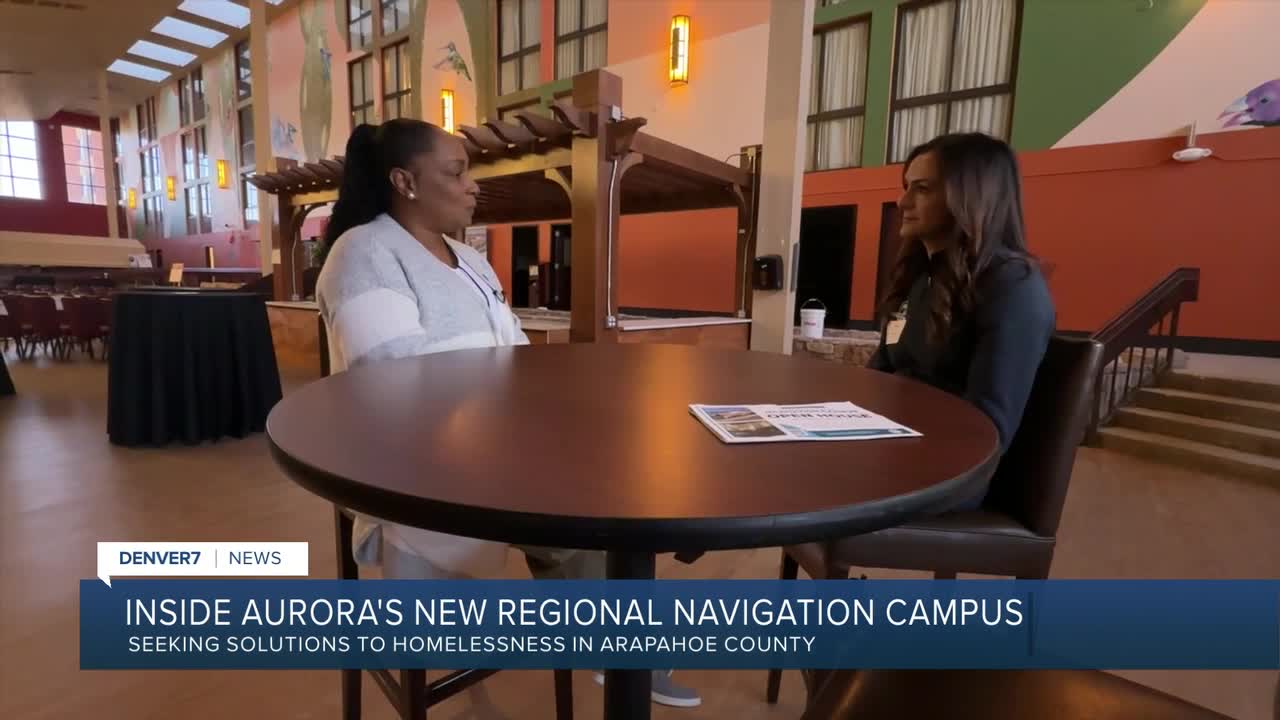AURORA, Colo. - The Aurora Regional Navigation Campus will soon be open to the community and will bring a massive shift on the response to end homelessness to the area.
The $40 million project turned a former hotel and convention center into a campus that houses a day center, different types of sheltering, a resource center, kitchen, support services, and workforce housing.
The facility at 15500 E. 40th Avenue can house around 600 people. The Aurora Mayor added, during inclement weather, the day center on campus could hold even more.
The campus was funded through a variety of sources:
$15,360,852 – Colorado Department of Local Affairs (DOLA)
$5,000,000 – Aurora American Rescue Plan (ARPA) Funds
$3,734,741 – Department of the Interior HOME-ARP Funds
$5,000,000 – Adams County ARPA Funds
$3,270,861 – Adams County HUD HOME-ARP Funds
$5,000,000 – Arapahoe County ARPA Funds
$1,125,000 – Douglas County ARPA Funds
$1,500,000 – Community Development Block Grant (CDBG) COVID Funds
Aurora Mayor Mike Coffman said he researched Houston, San Antonio, Denver and Colorado Springs' responses to homelessness.
"What I took from the most was Colorado Springs, where the Springs Rescue Mission had an incentive-based program," he said.
At the Regional Campus, organizers have split shelter and housing into three tiers.
The capacity for Tier One is 285 people. It operates as an emergency shelter.

"We're just going to give you very minimal, basic services if you're in Tier One: the low barrier shelter, congregate settings. Sleeping on cots. But we want to incentivize you to go to Tier Two," said Coffman.
Tier Two offers a little more privacy and storage for an additional 114 people who have agreed to participate in the supportive services offered by Advance Pathways who will operate the campus.

"This 13 acres of services is to provide navigation for unhoused adults. We provide not only emergency shelter, but also services from a day center, where you can get a shower, be able to do laundry, in addition to other navigation services of community and county services being available, workforce development. And ultimately, we're trying to create pathways towards each person's self sufficiency," said Jim Goelbelbecker, CEO of Advance Pathways.
Tier Three consists of an additional 220 hotel rooms that have been converted into temporary workforce housing. There are another 20 additional respite beds.

"If you're working a full time job, a tax paying job, you can stay here for up to two years, if it was necessary, in order for people to be able to save for their first and last month's rent," said Goelbelbecker.
In Tier Three, residents will also have to contribute around a third of their income to pay for the services and programs offered at the campus.
"The City of Aurora will commit some monies on an annual basis, but the for the operating budget, 75% has to be privately raised. So that puts tremendous pressure on the operator, who I believe can do it, to deliver results. Not just to maintain people at their current levels, but to really demonstrate that they can move people forward," said Coffman.
In addition to homes for the residents, the campus also has an option for pets.
"We want to be able to help those who are coming off the street that have a pet, particularly a dog. It's about 10% of your population," said Goelbelbecker of the series of kennels built to be part of the campus.

Shantell Anderson spoke at the unveiling of the campus. Once formerly homeless, she is now the Director of Program at Advance Pathways.
"I remember navigating the services and being told, 'Oh, you have to go across town to get this, or you have to go over here to get this.' We're removing the barrier by having all of the services in house," she said.
She's hopeful having so many supportive services under one roof in addition to the tiered approach will help those wanting to change their lives to become self sufficient and successful.
"As you get to see your peers and your counterparts move up and move on, that's going to spark an interest, right? And you have staff that's saying, "Hey, why don't you give it a try, right?" Encouraging. At some point you'll be like, I do want to give it a try," Anderson said, "It's at their pace, but at the same time, it's here. It can happen."
The campus will be open to the public on November 17.







